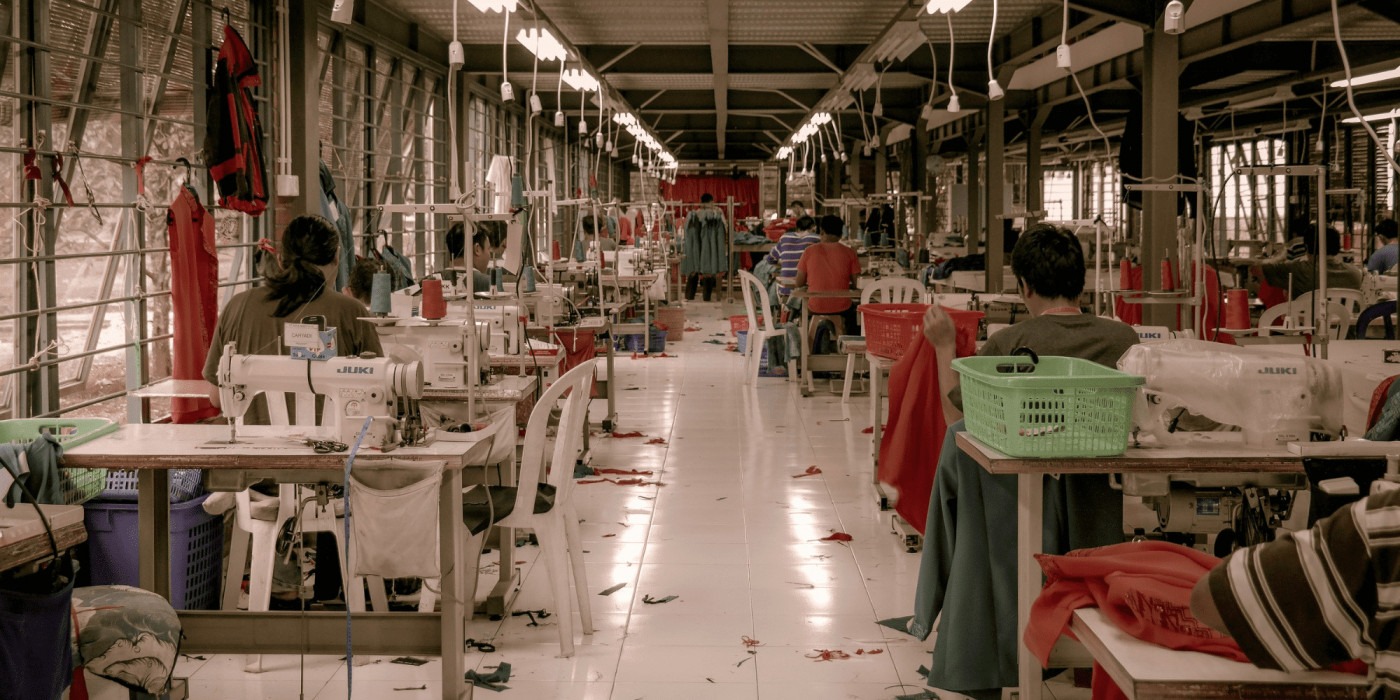Eco-chic’s human stitch: sustainability meets worker dignity
Sustainable fashion is frequently associated with eco-friendly methods, such as using organic materials, reducing waste and emissions, and the ecological footprint of the clothing production process. However, this limited understanding falls short of capturing the whole picture of what sustainability means in the fashion industry.
All too often, with the hype around eco-fabrics and recycled textiles, the human cost of rapid fashion is disregarded. Numerous garment workers, mostly women in poor nations, work in appalling conditions, dealing with little pay, excessive overtime, harassment at work, and even the exploitation of children as labourers. Sustaining worker’s rights, dignity, and well-being across the supply chain necessitates true sustainability that goes beyond fibres and dyes alone. A brand cannot be considered sustainable if it disregards the lives and livelihoods of those who work in the factories and on the cotton fields to produce our clothes. Sustainable fashion is an intersectional endeavour that combines caring for the environment with the economic empowerment and humane treatment of those who make our clothes.
Employees are underpaid and overworked by 75 hours, despite the legal cap of 40 hours on average work hours
But how precisely do labour laws and ethics relate to sustainability? Why is it crucial to give it some thought? In order to respond, let’s take a quick look at how fast fashion operates. Low expenses are necessary for fast fashion manufacturers to sell clothing at meagre rates. Reducing the pay of garment workers in the supply chain is one of the primary methods for doing this. Fashion businesses’ eagerness to relocate their operations to nations like Bangladesh, India, and Vietnam is mostly due to an inadequate control of the textile production process. Companies who want to avoid being held accountable for the immoral methods used to create their clothes at such low rates, enable their subsidiaries to operate with little to no regulation.
Fashion history is replete with instances that serve as a sobering reminder of the absence of sustainable solutions. In 2021, Public Eye, a Swiss advocacy group, released a report called Shein, which claimed that employees are underpaid and overworked by 75 hours, despite the legal cap of 40 hours on average work hours. Another example includes 15 invited brands refusing to provide evidence to the UK’s Environmental Audit Committee about the extent of their social and environmental impacts and the progress they have made in the past five years.
However, the 2013 collapse of Rana Plaza stands as an eye-opening lesson recorded in history. On the morning of April 24 2013, Rana Plaza, an eight-story structure on the outskirts of Dhaka, Bangladesh, housing five textile companies, fell in roughly 90 seconds, killing over 1,000 people. It is regarded as one of the worst industrial mishaps ever and the deadliest in the history of the contemporary clothing industry.
Fast fashion has transitioned into ‘instant fashion’ creating severe pressure and workload on these production units
The hunt for responsibility extended much beyond Bangladesh’s boundaries and even beyond individual people. Clothing for British quick fashion company Primark and Italian store Bennetton was manufactured at Rana Plaza factories. As a result, the catastrophe served as a window into the industrialised world, where western companies were adopting a low-cost production to satisfy the demand from consumers who were hungry for inexpensive apparel.
The positive to come out of the disaster was the formation of one of the strongest legally bound accords that the world had ever seen but a decade after the tragedy very few things have changed for the workers. Despite the heavy inflation, the minimum wage has never been revisited for the last 5 years, the incident left many scarred both mentally and physically to ever go back to work again.
But the world of fashion has moved on, demands are created based on trends that are set every week. Fast fashion has transitioned into ‘instant fashion’ creating severe pressure and workload on these production units that have already been exploitative.
Eco-friendly materials and circular production models are vital, but they’re just one piece of a larger, ethically woven tapestry
In a generation that has created tremendous discourse regarding sustainability around fashion, it’s unfortunate that the value of those conversations has remained in the echo chambers of the climate crisis. Fashion sustainability goes much beyond that. Being aware of the environment is a terrific first step in holding the fashion industry responsible, but it’s also true this business needs to prioritise ethics. Digging deeper is necessary for us as conscientious customers to see past the superficial sustainability promises.
Perhaps it’s time we reimagine the mental imagery associated with ‘sustainable fashion’. Eco-friendly materials and circular production models are vital, but they’re just one piece of a larger, ethically woven tapestry. The true visionaries in this space see that tapestry’s brilliant breadth. Theirs is a holistic spirituality – encompassing not just environmental regeneration, but individual empowerment and intersectional human flourishing.
It’s a beautiful, messy, human centred metamorphosis unfolding. And it has the power to not just green our clothes but make the entire industry a fertile ground where the seeds of justice and dignity can finally take root.

Comments